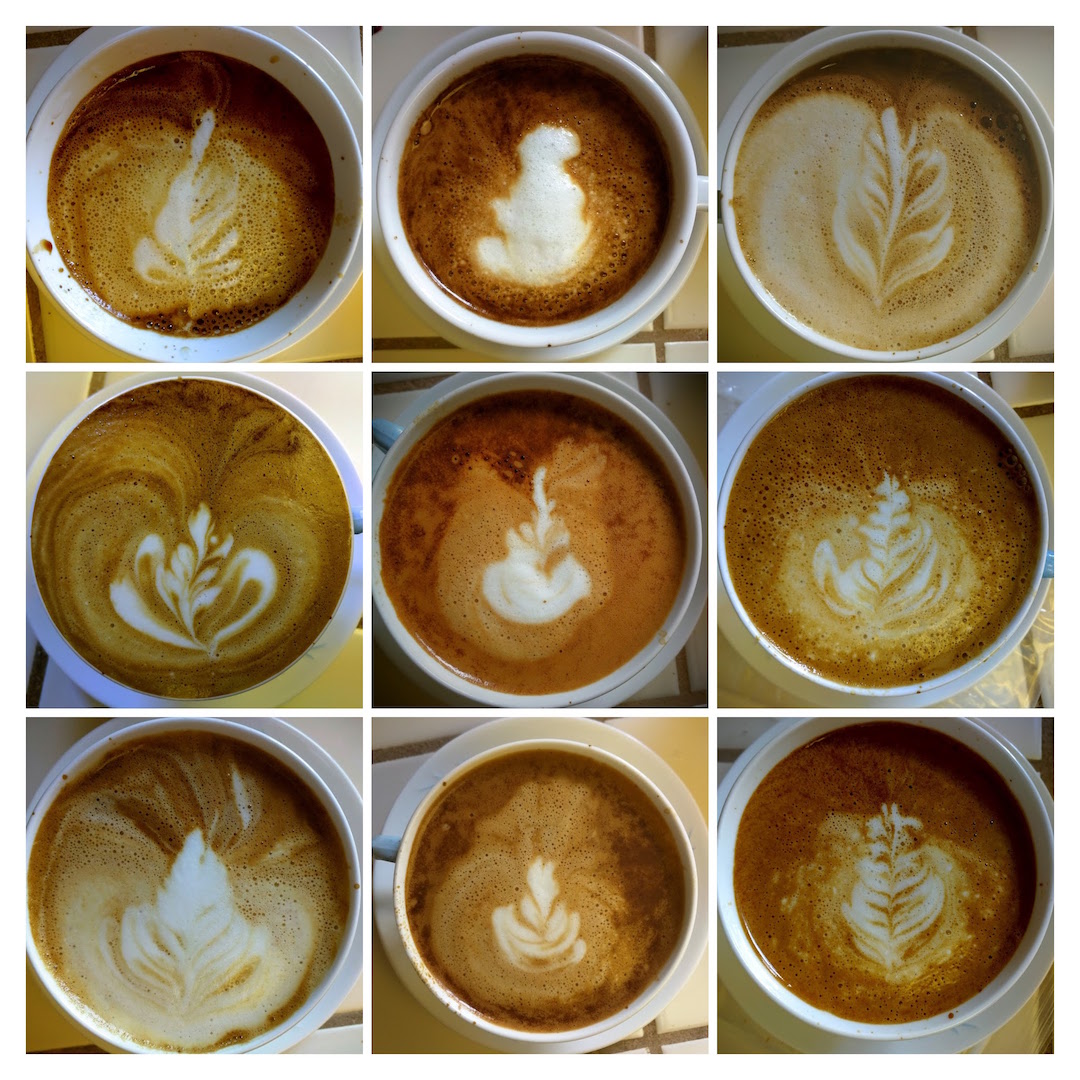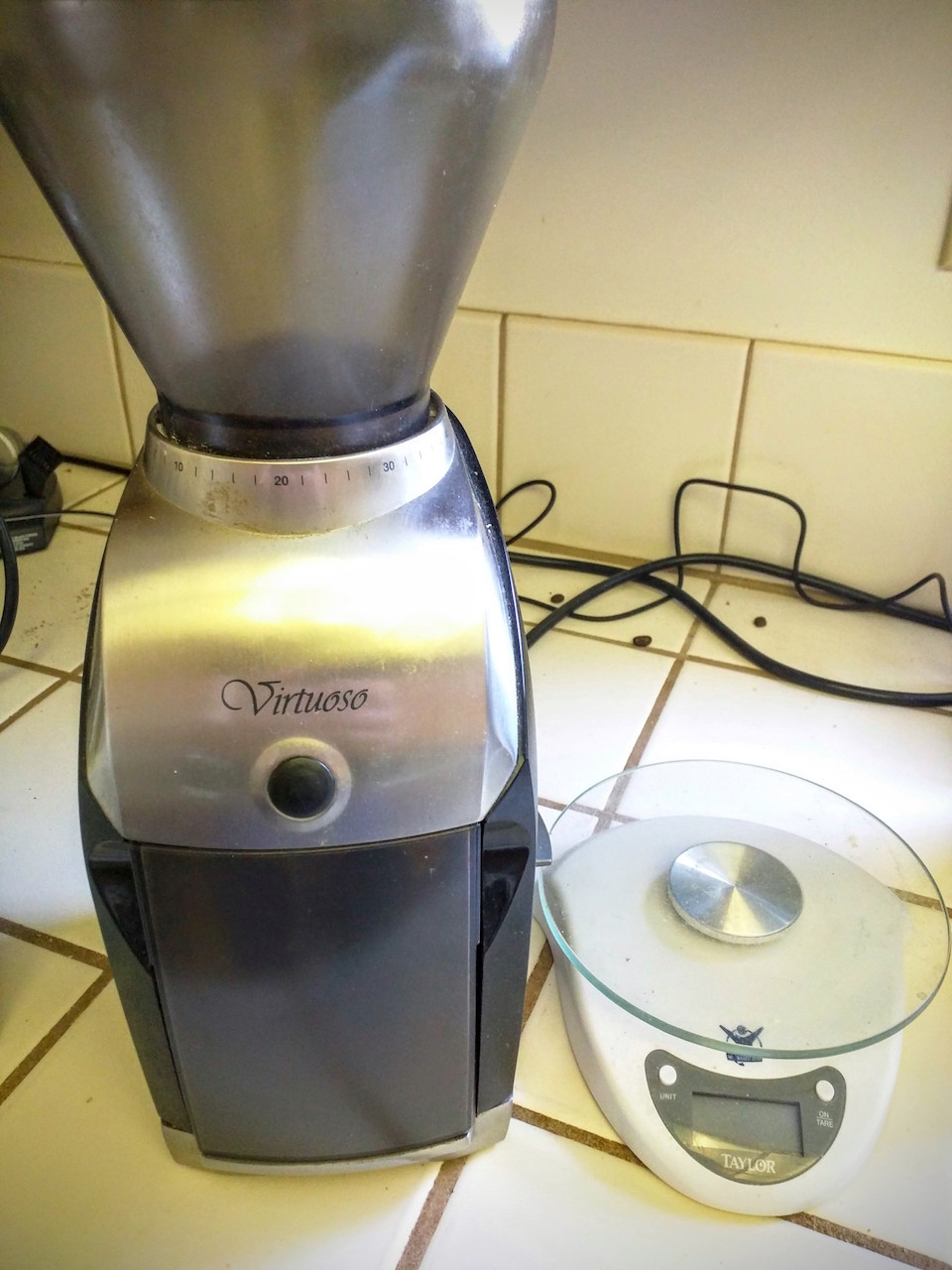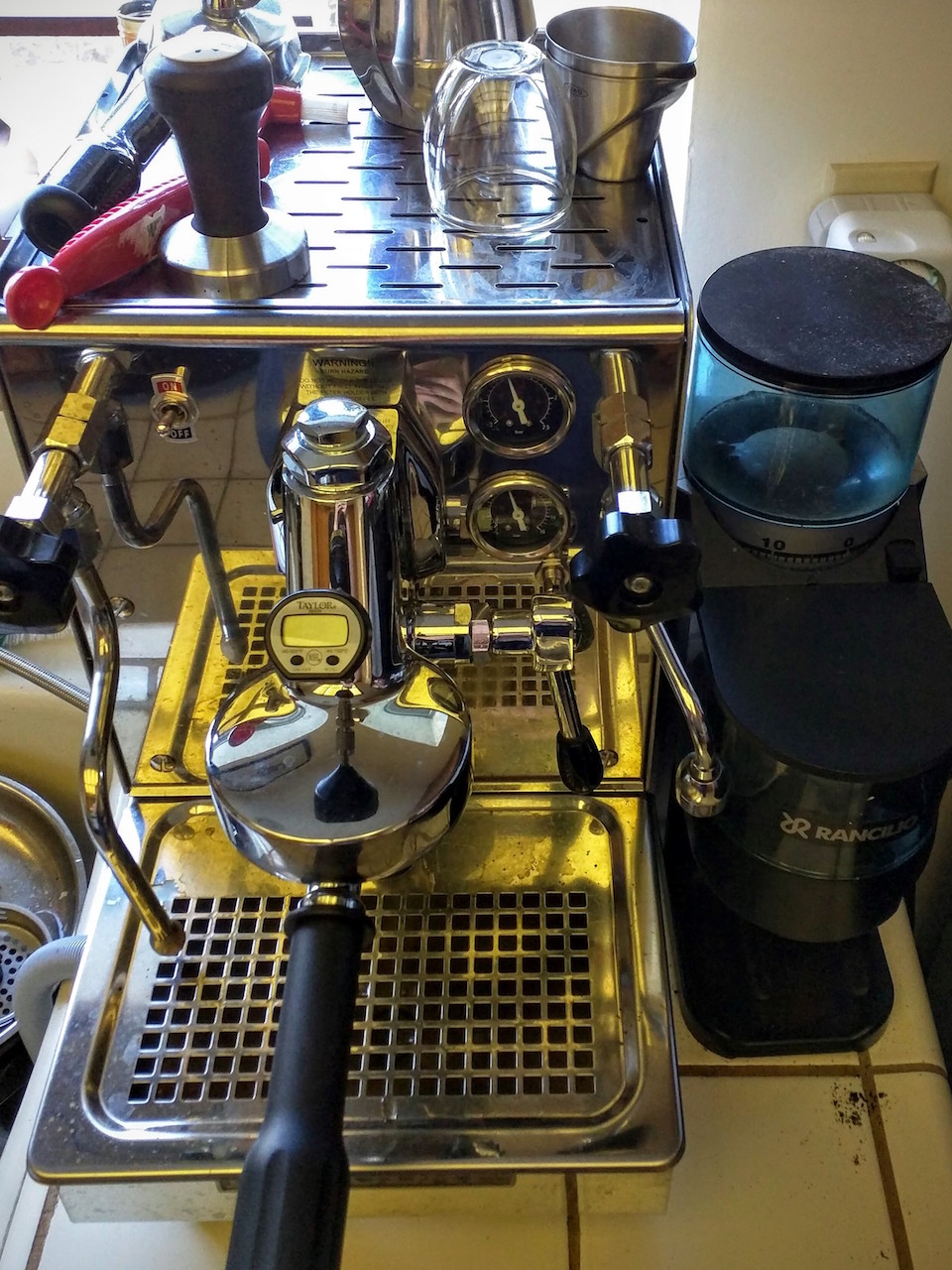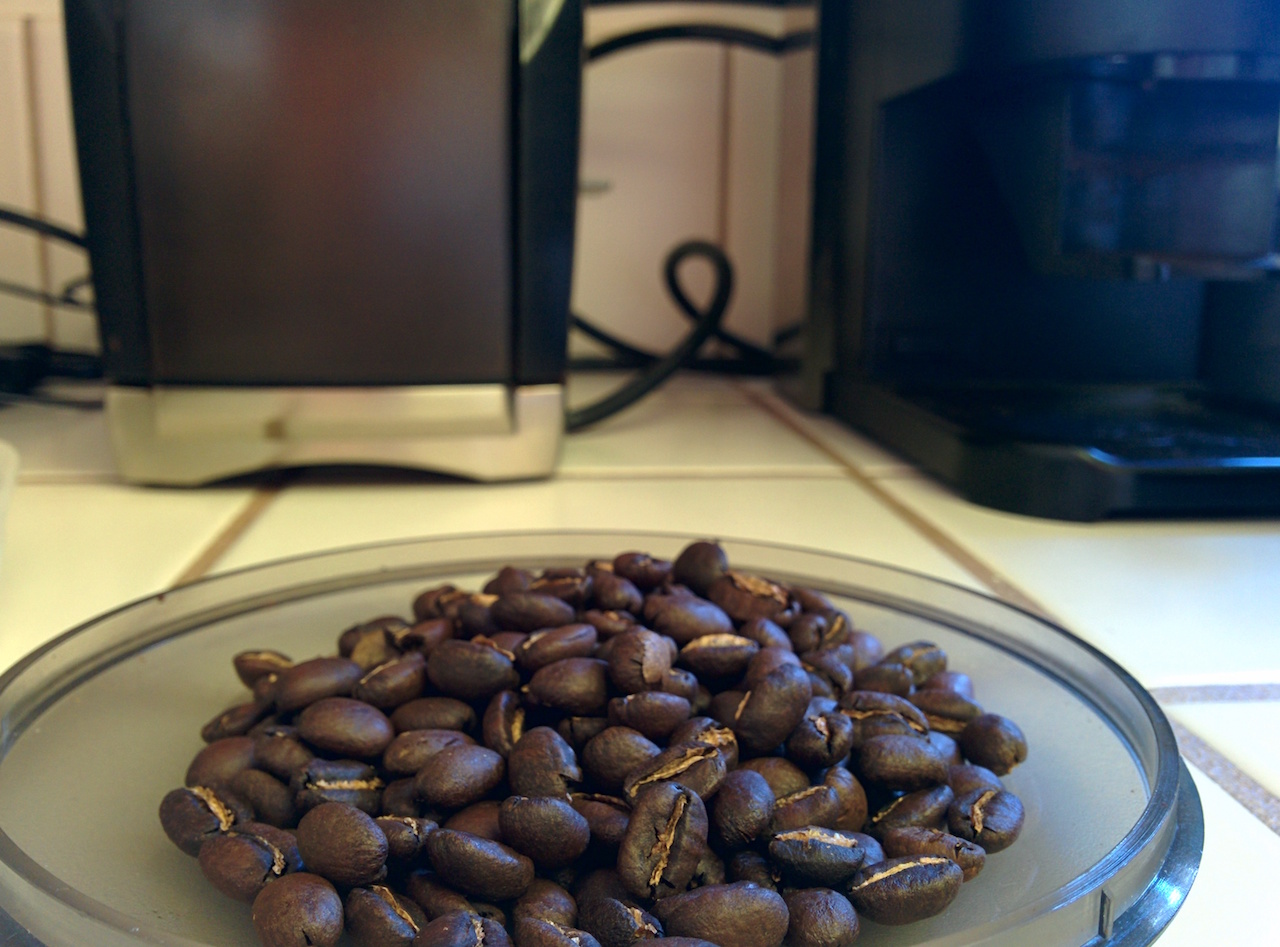Free Coffee!
I drink some of the best coffee in the Bay Area, every day, for free. Here’s how I do it.
Step 1
This may sound like cheating, but the easiest way to drink amazing coffee all the time is to learn to make amazing coffee yourself. I’ve spent years working on this skill, learning a bunch of different methods of brewing and extracting coffee, learning what works and what doesn’t. For me, that’s more than just knowing how to make a good pot of coffee.
I worked at a couple of coffee shops when I was in high school and college. I’ve had an espresso machine at home for around 14 years now, and this past year is when I finally started getting the extractions that I wanted consistently. It doesn’t need to take 15 years to do, having good equipment helps a lot, and that was somewhat of a barrier for me until now. Even with a great espresso machine and knowing how to pull an excellent espresso, I’m still learning how to really nail the latte. I’ve been making progress:

Over the years, I’ve also learned pour-over, cold brew, siphon, and french press. I’ve done cowboy coffee on a few occasions. All this to say, that at home, I’m capable of making coffee that rivals most coffee shops around. No, I’m not better than Blue Bottle, or Chromatic, but most of the time, I don’t have a reason to buy coffee out.
Step 2
Get some good equipment. The first thing is a burr grinder. You’ll want to grind your coffee just before you brew it. It starts oxidizing very quickly once ground, as that happens the flavor disappears.
 <img alt=“grinder 2"width=“47%” src=“https://storage.googleapis.com/ejf-io/grinder_2.jpg">
<img alt=“grinder 2"width=“47%” src=“https://storage.googleapis.com/ejf-io/grinder_2.jpg">
I would also recommend a cheap kitchen scale, so that you can use a consistent amount of coffee, to make your coffee more consistent. A good rule of thumb is 7g of coffee per serving (6oz for drip, 4oz for french press).
If you’re into drip coffee, I’d suggest finding a drip machine that uses a stainless steel insulated carafe, instead of a glass carafe with a heating element. I would also try to find one that heats the water to between 190-200ºF, which is a typical suggested extraction temperature.
For espresso, you’ll probably want to start with a less expensive machine like a Gaggia and work your way up. I love my Expobar, it has delivered results that I have not seen on the lower end machines that I’ve used. Espresso is a bit of an expensive hobby.

Step 3
Roast coffee at home. This is where you start saving money. Roasting at home means that you get the freshest possible beans, for cheaper than the grocery store brand (probably). Can you buy 1lb of beans that were roasted yesterday for $6.50? If you can, then maybe you don’t need a roaster.
Roasting is a skill itself, and will take some time to get the hang of, but it’s totally worth it. If you are into espresso, the difference in flavor will be obvious, and you’ll start to wonder why you should pay for espresso out. You’ll be drinking the freshest coffee possible, and freshness is what brings you flavor.

Roasting is a bit of a hassle, but once you get into it, it’s really not that bad. I know the timing of my machine for the batches that I roast, so I know the 3-4 minute window where I need to be watching my machine, and paying close attention. (Warning, beans can catch fire while roasting, you’re going to need to know what to look out for in that case - primarily fire in your roaster.)
Step 4
Sell half of your roasted beans for twice what you bought them for raw. E.g., buy 1lb of raw beans for $6.50, roast it, sell half of that for $6.50. I tend to roast about 340g of raw beans, which comes out to around 290g roasted, and then sell 145g of that for $5. I tend to sell around 3 batches of the 145g beans per week, and drink about the same amount at home. Quick note here, I make sure to buy larger quantities of beans (12-16lbs) using Sweet Maria’s fixed shipping option to keep shipping costs low.
What’s great is that this is a good deal for your friend who’s buying it too. It’s cheaper for your friend than buying a higher end brand that is fresh. I sell mine by the gram, so 290g (~10oz) is $10, or $11.75 for 12oz. According to Instacart, buying coffee from Whole Foods would be expensive: Philz is $14.50 for 12oz, Blue Bottle is $12-14 for 8oz, Stumptown is $17 for 12oz, same as Ritual, SightGlass is $16 for 12oz, FourBarrel is $18 for 12oz.
Conclusion
Has it all been worth it? For me it has been. Since I started this whole process years ago, it’s difficult to calculate the savings. However, let me give it a try. Let’s say that 5 times a week, you go out for coffee, either for espresso, or a latte, or just a regular coffee. I’m going to assume that each trip is going to average $3.50. That’s $17.50 per week, or $910 per year. Let’s add to that making coffee at home, with some reasonable quality grocery store beans at $12/lb, where you go through 0.5lbs per week, that’s another $312 per year brewing coffee at home, and adds up to a total of $1,222 annually.
Cutting the investment above down to the bare essentials, you could pick up a 1lb roaster for $370 (Behmor 1600 Plus), a nice grinder for $130 (Baratza Encore), a Gaggia Classic for $300, and a pour-over v60 for $20. That’s an initial one-time investment of $820. If you get up and running roasting and selling your beans quickly, you could save money the first year, and even afford to get a nice espresso machine like mine by the second year, and still come out ahead.
Even if you ended up not selling beans, you’d likely use around 1lbs per week (making a bit more at home, and not going out), so you would spend around $338 annually.
It’s a bit of work roasting so frequently, but I really enjoy my time with my coffee.